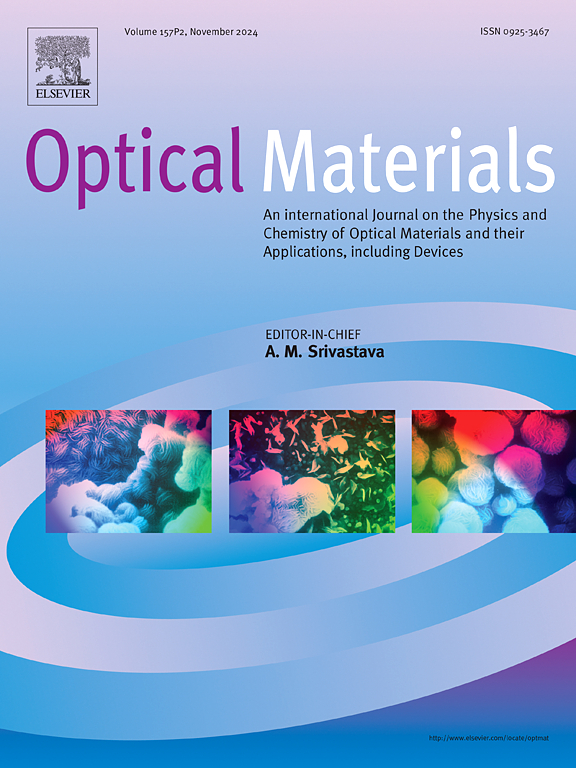自激活Sr9(BN2)6的Mg取代增强发光
IF 3.8
3区 材料科学
Q2 MATERIALS SCIENCE, MULTIDISCIPLINARY
引用次数: 0
摘要
市售荧光粉在很大程度上依赖于掺杂稀土(RE)的主材料,这使得这些材料越来越昂贵。为了应对这一挑战,我们采用简单的一步固态烧结工艺,成功研制出新型无稀土掺杂的自激活荧光粉 Sr9(BN2)6(SBN) 和 Sr8Mg(BN2)6 (SMBN)。两者具有相同的立方晶体结构。用 Mg2+ 离子取代 Sr2+ 离子可以有效地调整空位,从而产生奇特的发光特性,如激发峰的蓝移和展宽,以及红移发射的高发光效率。据推测,所观察到的发光现象来自于由 Sr1 和 Sr2 空位(VSr1 和 VSr2)形成的发光中心。镁的存在具有双重作用:它不仅能最大限度地减少内在缺陷对电子的捕获,改善发光行为,还能改善 SMBN 样品暴露在空气中时的潮解现象,这对增强现有的自激活发光材料和探索新的缺陷相关材料具有指导意义。本文章由计算机程序翻译,如有差异,请以英文原文为准。

Enhancement of luminescence via Mg substitution in self-activated Sr9(BN2)6
Commercially available phosphors rely heavily on rare earth (RE)-doped host materials, making the materials increasingly expensive. Addressing this challenge, we successfully developed novel RE-free self-activated phosphors Sr9(BN2)6(SBN) and Sr8Mg(BN2)6 (SMBN) through a simple one-step solid-state sintering process. Both possess the same cubic crystal structure. Replacing Sr2+ with Mg2+ ions effectively adjusts the vacancy, resulting in peculiar luminescence properties, such as blueshifting and broadening in the excitation peak, and high luminous efficiency in redshifted emission. It is speculated that the observed luminescence arises from the luminescent center formed by Sr1 and Sr2 vacancies (VSr1 and VSr2). The presence of Mg serves a dual purpose: it not only minimizes the trapping of electrons by intrinsic defects, improving the luminescence behavior, but also ameliorates the deliquescence of the SMBN sample when exposed to air, which is a guide to enhance the existing self-activated luminescent materials and explore new defect-related materials.
求助全文
通过发布文献求助,成功后即可免费获取论文全文。
去求助
来源期刊

Optical Materials
工程技术-材料科学:综合
CiteScore
6.60
自引率
12.80%
发文量
1265
审稿时长
38 days
期刊介绍:
Optical Materials has an open access mirror journal Optical Materials: X, sharing the same aims and scope, editorial team, submission system and rigorous peer review.
The purpose of Optical Materials is to provide a means of communication and technology transfer between researchers who are interested in materials for potential device applications. The journal publishes original papers and review articles on the design, synthesis, characterisation and applications of optical materials.
OPTICAL MATERIALS focuses on:
• Optical Properties of Material Systems;
• The Materials Aspects of Optical Phenomena;
• The Materials Aspects of Devices and Applications.
Authors can submit separate research elements describing their data to Data in Brief and methods to Methods X.
 求助内容:
求助内容: 应助结果提醒方式:
应助结果提醒方式:


